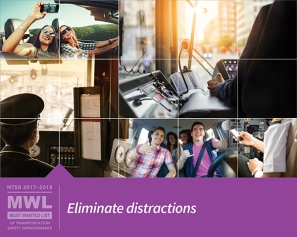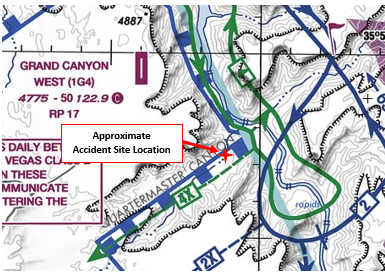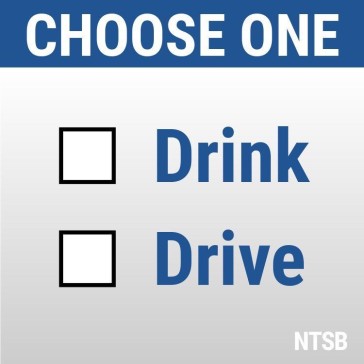By Nicholas Worrell, Chief, NTSB Safety Advocacy Division
Here’s a reminder we thought we’d never have to give: Don’t jump out of a moving vehicle to dance in the street.
Recently, the #InMyFeelings challenge introduced a new safety challenge to road users. It began with a fan dancing to the Drake song “In My Feelings” and posting a video of his moves. Then, fans began hopping out of cars as they rolled along in neutral to dance to the lyrics “Keke, do you love me? Are you riding?” Often the driver is the one doing the recording. Sometimes the driver was even the one who got out and danced.
Believe it or not, the NTSB was ready for the #InMyFeelings challenge. Sort of.

Driver distraction has been a target of our Most Wanted List (MWL) for years, and just taking a video while driving invites tragedy. Thousands die, and hundreds of thousands are injured in distraction-related crashes every year. This specific trend is too recent—and, with any luck, will be too short-lived—for us to learn something new by investigating any crashes, injuries, or fatalities it may cause. However, the unnecessary risks inherent in the challenge should not simply be overlooked.
Driver distraction features prominently in this viral challenge, but the more obvious risk is the poor decision to hop out of a moving vehicle to dance. Although “Bad Decision Making” is not on our MWL, we have seen a variety of crashes attributable to making poor choices. We have also studied the particular challenges faced by teen drivers, and we have long focused on graduated driver licensing laws in part to gradually introduce young and novice drivers to the roadway environment. Now, it appears that certain drivers and passengers are intent on being introduced to that environment in a more literal way.
NTSB investigators see needless suffering in crashes that are caused by everything from fatigue to alcohol and other drug impairment, from mechanical failures to poorly maintained road markings and signs. Although we can’t undo a roadway tragedy for the victims, we can improve safety for the world that they far too often leave behind. In addition to our rigorous investigations and carefully considered recommendations, we also have to look at potential precursors to crashes, like a viral dance challenge, to try to stop tragedies before they occur.
My division, Safety Advocacy, educates teens on safety risks they may not have known about or understood as dangerous. We are passionate about driver safety because we know the facts: Motor vehicle crashes take more than 37,000 American lives each year. Almost all roadway deaths are preventable, but sometimes the paths to prevention are complex, requiring advancements in law enforcement, technology, or the roadway environment. Preventing death or injury from #doingtheShiggy is comparatively simple: Don’t jump out of a moving car for a meme. That’s it. It’s foolish, it puts other road users at risk, and, it’s an excellent way to suffer road rash, legal penalties, or worse. By posting such a video, you’re providing evidence not just of your dance moves, but of any laws you may be breaking. In a recent roundtable on distracted driving, we heard survivor advocates’ ideas about getting tougher on drivers using their phones (like the driver-cameraperson in this challenge). Part of getting tougher includes increasing enforcement of distracted driving laws. If your local law enforcement agency is among the many cracking down on distracted drivers, the last thing you want to do is post evidence of you and your friends breaking the law.
about or understood as dangerous. We are passionate about driver safety because we know the facts: Motor vehicle crashes take more than 37,000 American lives each year. Almost all roadway deaths are preventable, but sometimes the paths to prevention are complex, requiring advancements in law enforcement, technology, or the roadway environment. Preventing death or injury from #doingtheShiggy is comparatively simple: Don’t jump out of a moving car for a meme. That’s it. It’s foolish, it puts other road users at risk, and, it’s an excellent way to suffer road rash, legal penalties, or worse. By posting such a video, you’re providing evidence not just of your dance moves, but of any laws you may be breaking. In a recent roundtable on distracted driving, we heard survivor advocates’ ideas about getting tougher on drivers using their phones (like the driver-cameraperson in this challenge). Part of getting tougher includes increasing enforcement of distracted driving laws. If your local law enforcement agency is among the many cracking down on distracted drivers, the last thing you want to do is post evidence of you and your friends breaking the law.
Avoid becoming—or causing—an #InMyFeelings fatality. All you have to do is not jump out of a moving vehicle. Crashes happen fast, sometimes in the blink of an eye. Driving distracted is dangerous and can be deadly. No call, no text, no update is worth a human life. No dance is either. In my feelings, that’s a pretty simple ask.




